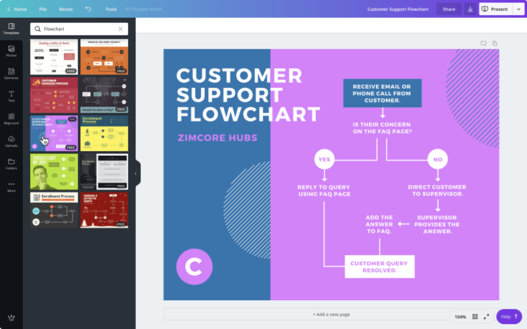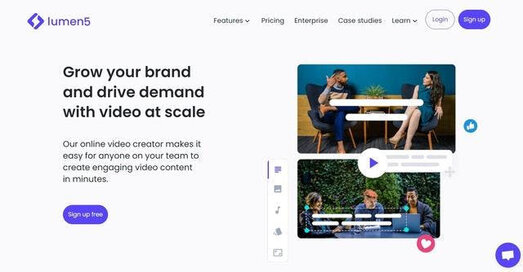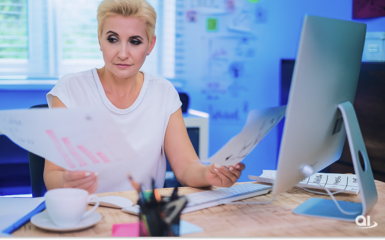How to create visual content with AI in 2024

Reading time:
minutes
In today's world, visual content plays a key role in digital marketing strategies. With advances in technology and access to artificial intelligence (AI), creating unique and engaging visual content is more accessible and efficient than ever before. In 2024, AI continues to revolutionize design and marketing processes by enabling companies to create high-quality images, graphics, and videos with minimal time and resources. In this article, we will explore how AI helps in the creation of visual content and which tools and strategies can improve marketing campaigns.
Automatisierte Erstellung von Grafiken

Modern AI tools such as Canva, Adobe Spark, and Visme offer options for automated graphic creation. These platforms use machine learning algorithms to generate designs based on user-entered data and preferences.
AI adapts the content to the specific context by analyzing previous projects and data on the target audience. For example, for an advertising post about summer sales, the system may suggest vibrant and warm colors that fit the theme.
These tools also simplify the workflow, which saves a significant amount of time. Instead of spending a long time searching for templates, users can simply enter text, and the system automatically selects suitable images, fonts, and colors.
Another important feature is the generation of unique graphic elements. Some platforms allow you to create original icons or illustrations, which helps to increase the originality of the content and shorten development time.
Image generation through neural networks

Neural networks such as DALL-E and Midjourney enable the creation of unique images based on text queries. These tools open up new horizons for marketing professionals by giving them the ability to generate visual content that matches their creative concepts.
AI offers marketing experts creative possibilities by allowing them to enter text descriptions and receive finished images that can be used in advertising materials. For example, a user can enter the query “space city in front of a starry sky,” and AI will generate a matching image.
These technologies also save time and resources. Instead of hiring an illustrator or photographer, companies can quickly obtain high-quality images, which is particularly important in a competitive environment.
In addition, AI enables the generation of visual content that is optimized for different formats, whether for Instagram, Facebook, or a website. This simplifies the publishing process and makes it more efficient.
Personalization of visual content
With the help of AI, companies can tailor visual content to different target audience segments. Tools such as Phrasee and Persado use AI to analyze consumer data and generate personalized images and messages.
- Data analysis: AI analyzes user behavior, preferences, and interactions with content, enabling the creation of visual content that best matches the interests of the target audience.
- Personalized recommendations: For example, if a user is frequently interested in products from the “health and fitness” category, AI can suggest visual content that reflects this topic, increasing the likelihood of conversion.
- A/B testing: AI can perform A/B testing on different visual content to determine which is most effective for different target audiences. This helps improve marketing strategy and boost campaign results.
- Content optimization: Personalized content significantly increases interest in the product and promotes interaction with the brand. Studies show that personalized visual content can increase conversion rates by 20% or more.
AI in video marketing

Thanks to AI technologies, creating and editing videos has become easier. Tools such as Lumen5 and Synthesia enable the creation of video clips from text and the automatic generation of voiceovers and subtitles.
- Lumen5: This platform allows users to upload text materials such as blogs or articles, which are converted into videos by AI. The system selects suitable images and audio tracks, significantly reducing the time required to produce video content.
- Synthesia: This tool enables the creation of videos with virtual presenters, making content more accessible to different languages and cultures. This expands the target audience and increases viewer engagement.
Some AI tools also offer the option of inserting interactive elements into videos, such as surveys and calls to action. This increases viewer engagement and promotes a better understanding of the information.
Analysis and optimization of visual content

AI supports the analysis of the effectiveness of visual content. Tools such as Google Analytics and Hotjar provide data on how users interact with visual content, enabling marketing experts to optimize their strategies.
- Measuring interaction: Analyzing the number of views, likes, and comments helps determine which visual content generates the most interest. This data forms the basis for adjusting the strategy and increasing viewer engagement.
- Identifying key metrics: AI can recognize patterns and trends in the data, allowing marketers to focus on the most effective approaches. When analyzing campaign results, for example, it can reveal which visual content has achieved the highest ROI (return on investment).
- Continuous improvement: AI can be used to generate performance reports on visual content, enabling teams to adapt to changes in user behavior and respond quickly to new trends.
In 2024, the use of artificial intelligence in the creation of visual content will open up new opportunities for marketing experts. Through automated tools, image generation, personalization, and video marketing, companies can significantly improve their strategies and achieve better results. Analyzing the effectiveness of content using AI also makes it possible to optimize approaches and increase engagement with the target audience. It is important to stay informed about new technologies and tools in order to remain competitive in a rapidly changing market.




